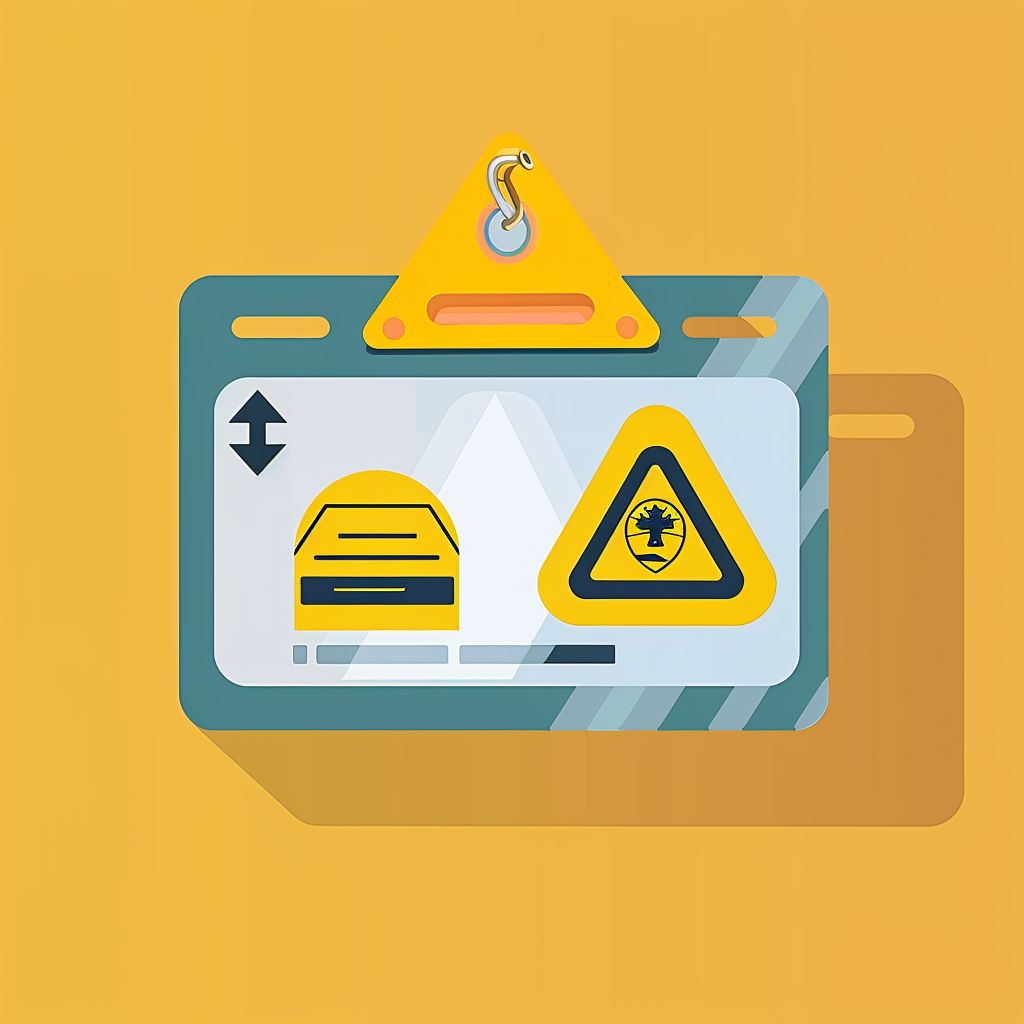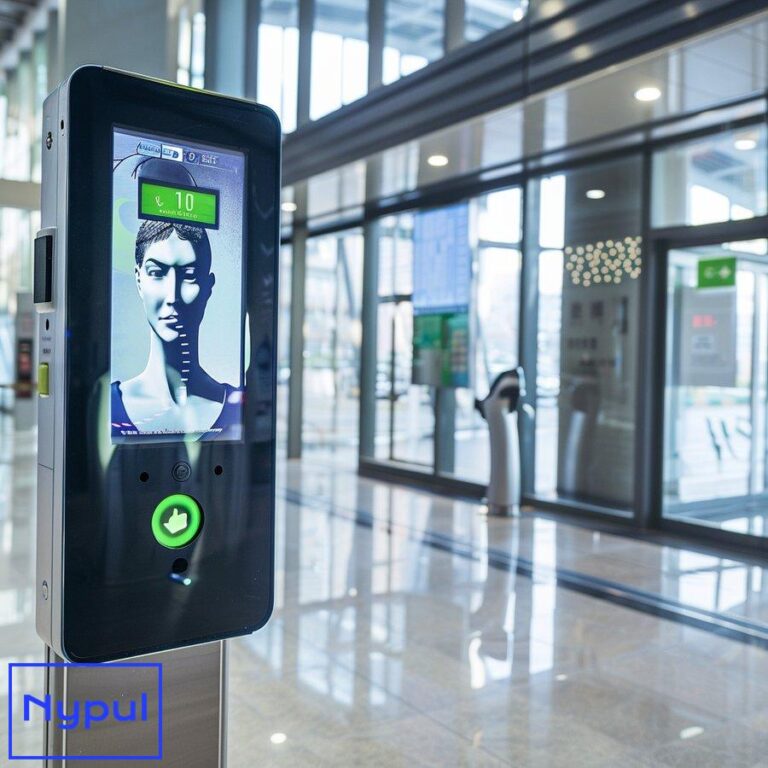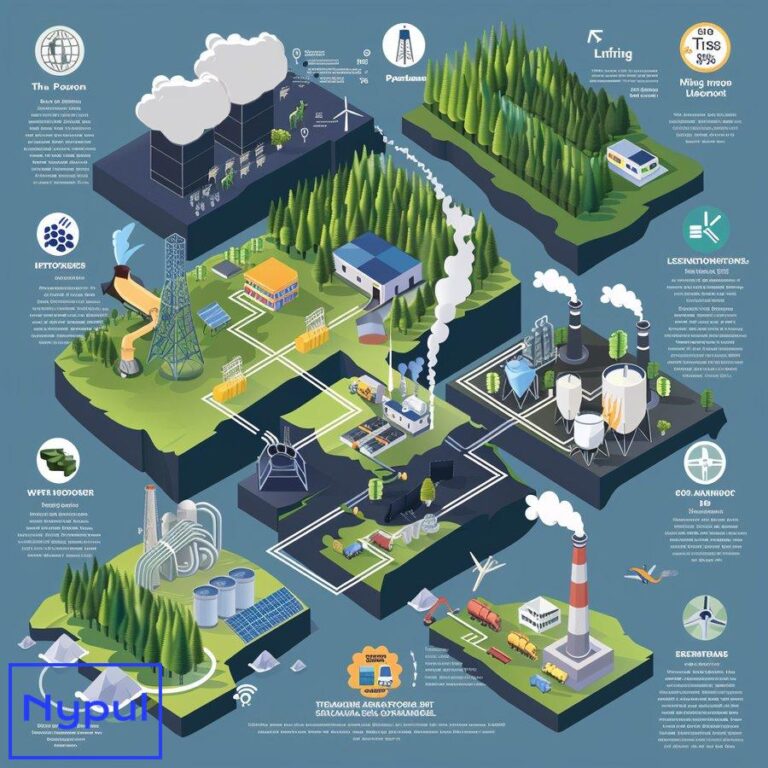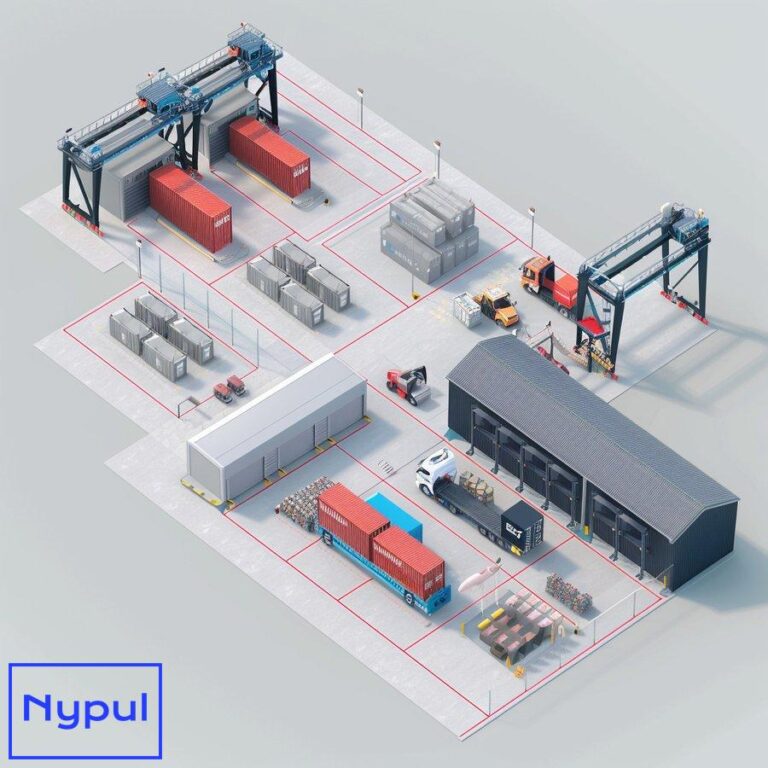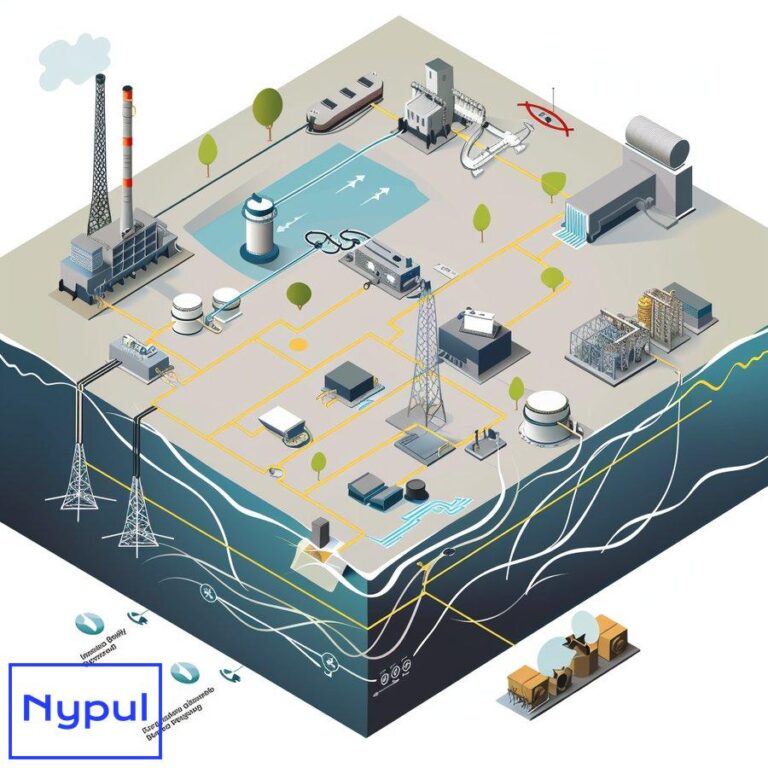Does TWIC Count as a Security Clearance
What is a TWIC card?
The Transportation Worker Identification Credential (TWIC) is a vital security measure implemented by the U.S. government to enhance maritime and port security. Issued by the Transportation Security Administration (TSA), TWIC cards are mandatory for workers requiring unescorted access to secure areas of maritime facilities and vessels regulated under the Maritime Transportation Security Act of 2002 (MTSA).
TWIC cards serve as tamper-resistant, biometric credentials that contain the cardholder’s fingerprint template and photograph. These smart cards utilize radio frequency identification (RFID) technology, allowing for quick and secure verification of the cardholder’s identity and access privileges.
Key Features of TWIC Cards:
Biometric Data: Each TWIC card stores the holder’s fingerprint template, enabling biometric verification at access points.
Photograph: A clear, recent photograph of the cardholder is displayed on the card for visual identification.
Personal Information: The card contains basic personal details such as name, date of birth, and expiration date.
RFID Technology: The embedded RFID chip allows for contactless reading of the card data.
Security Features: Multiple anti-counterfeiting measures are incorporated to prevent fraud.
TWIC cards are valid for five years from the date of issuance, after which they must be renewed. The program aims to ensure that individuals with access to sensitive areas of maritime facilities have undergone thorough background checks and do not pose a security threat.
Who Needs a TWIC Card?
TWIC cards are required for various professionals working in the maritime industry, including:
Port Workers: Longshoremen, stevedores, and other port employees
Merchant Mariners: Crew members of commercial vessels
Truck Drivers: Those transporting cargo to and from ports
Rail Workers: Employees involved in rail operations at ports
Facility Employees: Staff working at MTSA-regulated facilities
Vessel Crew: Personnel on MTSA-regulated vessels
Certain Contractors: Those requiring regular access to secure areas
While TWIC is primarily associated with maritime security, its applications extend beyond ports. Some government facilities and military installations also recognize TWIC as an acceptable form of identification for access purposes.
Understanding the nature and purpose of TWIC cards is crucial for professionals in the maritime and transportation sectors. These credentials play a significant role in maintaining the security of critical infrastructure and ensuring that only authorized personnel have access to sensitive areas.
How does the TWIC application process work?
The TWIC application process is designed to be thorough yet accessible for eligible individuals. The Transportation Security Administration (TSA) oversees this process, which involves several steps to ensure that applicants meet the necessary security requirements.
Step 1: Pre-Enrollment
Applicants can begin the process online through the TSA’s official TWIC website. During pre-enrollment, individuals provide basic personal information and schedule an appointment at a TWIC enrollment center.
Step 2: In-Person Enrollment
At the scheduled appointment, applicants must visit a TWIC enrollment center to complete the following tasks:
Document Verification: Present required identification documents
Biometric Data Collection: Provide fingerprints and have a photograph taken
Application Review: Confirm the accuracy of personal information
Fee Payment: Pay the application fee (as of 2024, $125.25 for a standard 5-year TWIC)
Step 3: Background Check
After enrollment, TSA conducts a comprehensive security threat assessment, which includes:
Criminal History Check: Review of federal and state records
Immigration Status Verification: Confirmation of legal status in the U.S.
Terrorist Watch List Screening: Check against various security databases
Step 4: Application Processing
The processing time for TWIC applications can vary, typically ranging from 1 to 3 weeks. Factors that may affect processing time include:
Completeness of Application: Ensuring all required information is provided
Background Complexity: Some applicants may require additional review
Volume of Applications: Processing times may increase during peak periods
Step 5: Card Issuance
Once approved, the TWIC card is produced and mailed to the applicant. Alternatively, applicants can choose to pick up their card at the enrollment center.
Eligibility Criteria for TWIC
To be eligible for a TWIC card, applicants must meet the following criteria:
Citizenship: U.S. citizens, lawful permanent residents, naturalized citizens, or non-immigrant aliens in lawful status
No Disqualifying Criminal Offenses: Certain criminal convictions may render an applicant ineligible
Mental Capacity: Must be mentally competent
No Ties to Terrorism: Must not be identified as a security threat
Application Status Tracking
Applicants can check their TWIC application status online through the TSA’s Universal Enrollment Services website or by calling the TWIC Help Desk.
TWIC Application Process Timeline
| Stage | Estimated Time |
|---|---|
| Pre-Enrollment | 15-30 minutes |
| In-Person Enrollment | 30-60 minutes |
| Background Check | 1-3 weeks |
| Card Production and Delivery | 5-10 business days |
The TWIC application process, while comprehensive, is designed to be as streamlined as possible. By following each step carefully and providing accurate information, applicants can help ensure a smooth and timely process. Understanding the requirements and preparing necessary documents in advance can significantly expedite the enrollment experience.
What are the different levels of security clearance?
Security clearances are a crucial aspect of national security, allowing individuals access to classified information based on their level of clearance. Unlike TWIC, which is specific to maritime and transportation sectors, security clearances are primarily used in government and defense-related fields. Understanding the different levels of security clearance is essential for those working in or aspiring to work in sensitive positions.
Three Main Levels of Security Clearance
The U.S. government recognizes three primary levels of security clearance, each corresponding to a specific level of sensitive information:
1. Confidential Clearance
This is the lowest level of security clearance. It provides access to information that could cause damage to national security if disclosed without authorization.
Key Features:
– Reinvestigation required every 15 years
– Typically granted to military personnel and some civilian contractors
2. Secret Clearance
A step above Confidential, Secret clearance allows access to information that could cause serious damage to national security if improperly disclosed.
Key Features:
– Reinvestigation required every 10 years
– Common among military officers, high-level NCOs, and some civilian contractors
3. Top Secret Clearance
The highest level of security clearance, Top Secret grants access to information that could cause exceptionally grave damage to national security if disclosed without authorization.
Key Features:
– Reinvestigation required every 5 years
– Held by senior military officers, high-ranking government officials, and select contractors
Additional Special Access Programs
Beyond these three main levels, there are specialized clearances and access programs:
Sensitive Compartmented Information (SCI)
– A type of Top Secret information
– Requires additional background checks and polygraph tests
Q Clearance
– Specific to the Department of Energy
– Equivalent to Top Secret in terms of background investigation
Yankee White
– Used for personnel working closely with the President and Vice President
– Requires extensive background checks and U.S. citizenship for several generations
Security Clearance Process
Obtaining a security clearance involves a rigorous process:
1. Sponsorship: An employer or government agency must sponsor the individual for clearance.
2. SF-86 Form: The applicant completes a detailed questionnaire about their background.
3. Background Investigation: Investigators verify information and conduct interviews.
4. Adjudication: Officials review the investigation results and make a clearance decision.
5. Periodic Reinvestigation: Clearances are subject to review at regular intervals.
Comparison of Security Clearance Levels
| Clearance Level | Access to Information | Reinvestigation Frequency | Typical Holders |
|---|---|---|---|
| Confidential | Could cause damage to national security | Every 15 years | Junior military personnel, some contractors |
| Secret | Could cause serious damage to national security | Every 10 years | Military officers, high-level NCOs, some civilian contractors |
| Top Secret | Could cause exceptionally grave damage to national security | Every 5 years | Senior military officers, high-ranking government officials, select contractors |
Security clearances play a vital role in protecting sensitive information crucial to national security. The multi-tiered system ensures that individuals have access only to the information necessary for their specific roles and responsibilities. Understanding these levels is essential for anyone considering a career in government, defense, or related industries where handling classified information is a key component of the job.
How does TWIC differ from a security clearance?
While both TWIC cards and security clearances serve important roles in ensuring safety and protecting sensitive information, they are distinct credentials with different purposes, scopes, and issuing authorities. Understanding these differences is crucial for professionals in various industries, particularly those involved in maritime operations or government work.
Purpose and Scope
TWIC Card:
– Primary purpose is to enhance maritime and port security
– Focuses on controlling physical access to secure areas of maritime facilities and vessels
– Does not grant access to classified information
Security Clearance:
– Designed to protect national security information
– Allows access to classified documents and sensitive government information
– Scope extends beyond physical access to include handling of confidential data
Issuing Authority
TWIC Card:
– Issued by the Transportation Security Administration (TSA)
– Part of the Department of Homeland Security’s efforts to secure transportation infrastructure
Security Clearance:
– Granted by various government agencies, including:
– Department of Defense
– Department of Energy
– Central Intelligence Agency
– Department of State
Eligibility and Application Process
TWIC Card:
– Open to U.S. citizens, lawful permanent residents, and certain non-immigrant aliens
– Requires a background check focused on criminal history and ties to terrorism
– Application process typically takes 1-3 weeks
– No sponsorship required; individuals can apply on their own
Security Clearance:
– Generally limited to U.S. citizens
– Involves an extensive background investigation, including:
– Financial records
– Personal relationships
– Foreign contacts
– Mental health history
– Process can take several months to over a year
– Requires sponsorship by a government agency or cleared contractor
Validity and Renewal
TWIC Card:
– Valid for 5 years
– Renewal process similar to initial application
– Continuous vetting throughout the validity period
Security Clearance:
– Validity varies by level:
– Confidential: 15 years
– Secret: 10 years
– Top Secret: 5 years
– Periodic reinvestigations required
– Subject to continuous evaluation
Access Granted
TWIC Card:
– Provides physical access to secure areas of maritime facilities and vessels
– May be recognized for access to some government facilities
– Does not grant access to classified information
Security Clearance:
– Allows access to classified information up to the level of clearance
– May facilitate physical access to secure government facilities
– Different levels (Confidential, Secret, Top Secret) grant access to increasingly sensitive information
Comparison Table: TWIC vs. Security Clearance
| Aspect | TWIC Card | Security Clearance |
|---|---|---|
| Primary Purpose | Maritime and port security | Protecting classified information |
| Issuing Authority | Transportation Security Administration | Various government agencies |
| Eligibility | U.S. citizens, permanent residents, some non-immigrants | Generally limited to U.S. citizens |
| Application Process | 1-3 weeks, focused background check | Several months to over a year, extensive investigation |
| Validity | 5 years | Varies by level (5-15 years) |
| Access Granted | Physical access to maritime facilities | Access to classified information |
| Sponsorship Required | No | Yes |
While TWIC cards and security clearances both involve background checks and grant certain types of access, they serve distinct purposes in different sectors. TWIC is specifically tailored for maritime and port security, providing physical access to secure areas. In contrast, security clearances are broader in scope, focusing on protecting classified information across various government and defense-related fields.
Professionals in the maritime industry may find that a TWIC card is sufficient for their needs, while those working with sensitive government information will likely require a security clearance. In some cases, individuals may need both credentials, depending on their specific job requirements and the nature of their work.
When might both TWIC and a security clearance be required?
There are scenarios where professionals may need both a TWIC card and a security clearance, particularly in roles that intersect maritime operations and sensitive government work. Understanding these situations is crucial for individuals working in specialized fields or those considering career paths that may require multiple credentials.
Overlapping Requirements
Certain positions and industries may necessitate both TWIC and security clearance due to the nature of the work involved:
Military Logistics Personnel
– Handling classified shipments through commercial ports
– Overseeing sensitive military cargo operations
Government Contractors
– Working on classified projects at maritime facilities
– Providing security services for both government and port operations
Intelligence Analysts
– Conducting on-site assessments at ports
– Analyzing maritime threats involving classified information
Naval Research Scientists
– Accessing both classified data and secure maritime research facilities
– Conducting experiments on naval vessels
Specific Scenarios Requiring Both Credentials
1. Defense Contractor at a Naval Base
A defense contractor working on classified ship systems at a naval base would need:
– TWIC: For physical access to the port facilities
– Security Clearance: To work on classified naval systems
2. Coast Guard Intelligence Officer
An intelligence officer analyzing maritime threats would require:
– TWIC: To access various port facilities for on-site assessments
– Security Clearance: To handle classified intelligence data
3. Customs and Border Protection Specialist
A CBP specialist dealing with high-risk cargo might need:
– TWIC: For unrestricted access to port areas
– Security Clearance: To access sensitive international shipping data
4. Maritime Cybersecurity Expert
A cybersecurity professional protecting port infrastructure would benefit from:
– TWIC: To physically access and assess port systems
– Security Clearance: To work with classified threat intelligence
5. Department of Energy Port Inspector
An inspector overseeing nuclear material shipments would require:
– TWIC: For port access
– Security Clearance (likely Q clearance): To handle sensitive nuclear-related information
Benefits of Holding Both Credentials
Professionals who possess both TWIC and a security clearance often enjoy several advantages:
Increased Job Flexibility: Ability to take on a wider range of assignments and roles
Enhanced Career Opportunities: Qualification for positions that require both maritime access and handling of classified information
Improved Efficiency: Seamless transition between port facilities and secure government installations
Comprehensive Security Profile: Demonstration of thorough vetting and trustworthiness to employers
Potential for Higher Compensation: Roles requiring multiple credentials often command higher salaries
Challenges of Maintaining Dual Credentials
While beneficial, holding both TWIC and a security clearance comes with certain responsibilities:
Regular Renewals: Managing different renewal timelines for each credential
Continuous Compliance: Adhering to the rules and regulations of both programs
Increased Scrutiny: Being subject to more frequent background checks and investigations
Reporting Requirements: Obligation to report changes in status that might affect either credential
Comparison: Jobs Requiring TWIC vs. Security Clearance vs. Both
| Job Title | TWIC Only | Security Clearance Only | Both Required |
|---|---|---|---|
| Port Worker | ✓ | ||
| Government Analyst | ✓ | ||
| Naval Base Contractor | ✓ | ||
| Merchant Mariner | ✓ | ||
| Intelligence Officer | ✓ | ||
| Maritime Cybersecurity Specialist | ✓ | ||
| Civilian Port Security Guard | ✓ | ||
| Military Logistics Coordinator | ✓ |
The requirement for both TWIC and a security clearance typically arises in specialized roles that bridge the gap between maritime operations and sensitive government work. These positions often involve handling classified information within the context of port and maritime security, necessitating both the physical access provided by TWIC and the information access granted by a security clearance.
Professionals in these fields must be prepared to undergo rigorous background checks and maintain compliance with the regulations of both credentialing systems. While challenging, the ability to operate in both spheres can lead to unique and rewarding career opportunities in critical areas of national security and maritime operations.
What accessdoes a TWIC card provide?
A Transportation Worker Identification Credential (TWIC) card provides specific access privileges within maritime and port environments. Understanding the scope of access granted by a TWIC card is crucial for both cardholders and employers in the maritime industry.
Physical Access to Secure Areas
TWIC cards primarily grant unescorted access to secure areas of maritime facilities and vessels regulated under the Maritime Transportation Security Act (MTSA) of 2002. These areas include:
Port Facilities: Restricted zones within seaports and harbors
Vessels: Secure areas on MTSA-regulated ships and boats
Outer Continental Shelf Facilities: Offshore installations related to energy production
Specific Access Points
TWIC cardholders can typically access:
Cargo Handling Areas: Zones where cargo is loaded, unloaded, and stored
Vessel Boarding Areas: Points of entry to ships and other maritime vessels
Restricted Port Buildings: Offices and facilities with sensitive operations
Security Checkpoints: Designated entry points to secure areas
Access Limitations
It’s important to note that a TWIC card does not automatically grant access to all secure areas. Access is still subject to:
Facility-Specific Policies: Individual ports may have additional access requirements
Job Role Requirements: Access may be limited based on an individual’s specific duties
Temporary Restrictions: Access can be modified during heightened security situations
TWIC Reader Requirements
The Coast Guard has established requirements for TWIC readers at certain high-risk facilities:
Risk Group A Facilities: Must use electronic TWIC readers for access control
Other Facilities: May use visual inspection of TWIC cards
Access Beyond Maritime Facilities
While primarily designed for maritime security, TWIC cards may provide additional benefits:
Government Facilities: Some federal buildings accept TWIC as a form of identification
Military Installations: Certain bases recognize TWIC for entry purposes
Critical Infrastructure: Some non-maritime critical infrastructure sites may accept TWIC
TWIC Access vs. Employee Badges
| Access Type | TWIC Card | Typical Employee Badge |
|---|---|---|
| Maritime Secure Areas | ✓ | Varies by employer |
| Unescorted Access | ✓ | Often limited |
| Non-Maritime Facilities | Limited | Specific to employer |
| Federal Recognition | ✓ | Generally no |
Access Verification Process
When accessing secure areas, TWIC cardholders typically undergo the following process:
Card Presentation: Show the TWIC card to security personnel or at a card reader
Biometric Verification: Fingerprint may be scanned to match the card’s data
Visual Inspection: Security may visually compare the photo on the card to the individual
Electronic Verification: Card data may be checked against the TSA database
Importance of TWIC Access
The access provided by TWIC cards is crucial for:
Operational Efficiency: Allows workers to move freely within secure areas
Security Enhancement: Ensures only vetted individuals can access sensitive zones
Regulatory Compliance: Helps facilities meet federal security requirements
TWIC cards provide a standardized, secure method for granting access to sensitive maritime areas. This system balances the need for robust security measures with the operational requirements of ports and vessels. By clearly defining and controlling access, TWIC contributes significantly to the overall security posture of the U.S. maritime infrastructure.
How can TWIC benefit maritime industry professionals?
The Transportation Worker Identification Credential (TWIC) program offers numerous benefits to professionals in the maritime industry. These advantages extend beyond simple access control, impacting career opportunities, operational efficiency, and overall industry security.
Career Advancement Opportunities
TWIC certification opens doors to various maritime-related positions:
Expanded Job Prospects: Eligibility for roles requiring secure area access
Competitive Advantage: Stands out on resumes for maritime industry positions
Versatility: Ability to work across different ports and vessels
Enhanced Employability
Holding a TWIC card makes professionals more attractive to employers:
Pre-Vetted Status: Demonstrates passing of federal background check
Readiness to Work: Immediate ability to access secure areas without additional clearance
Compliance with Regulations: Shows understanding of industry security requirements
Operational Efficiency
TWIC cards streamline various processes within maritime operations:
Quicker Access: Reduced wait times at security checkpoints
Unescorted Movement: Ability to navigate secure areas independently
Simplified Identification: Single credential for multiple access points
Industry-Wide Recognition
The standardization of TWIC provides benefits across the maritime sector:
Universal Acceptance: Recognized at MTSA-regulated facilities nationwide
Interoperability: Facilitates work at different ports and on various vessels
Professional Networking: Common credential among industry professionals
Cost-Effective Credentialing
While there is an initial cost, TWIC offers long-term financial benefits:
Single Credential: Replaces multiple facility-specific badges
Five-Year Validity: Long-term access without frequent renewals
Potential Employer Reimbursement: Some companies cover TWIC costs for employees
Security Awareness
The TWIC program fosters a culture of security consciousness:
Heightened Vigilance: Cardholders are more aware of security protocols
Reporting Mechanisms: Familiarity with procedures for reporting security concerns
Continuous Vetting: Ongoing background checks ensure sustained security
Professional Development
Obtaining and maintaining a TWIC card contributes to professional growth:
Security Training: Often includes basic security awareness education
Industry Knowledge: Familiarity with maritime security regulations and best practices
Credential Management: Experience in maintaining professional certifications
Facilitated International Travel
For some maritime professionals, TWIC can assist with international operations:
Recognized Credential: May be accepted at some foreign ports
Expedited Processing: Potential for faster clearance in certain international security situations
TWIC Benefits Across Maritime Professions
| Profession | Key Benefits |
|---|---|
| Port Workers | Unescorted access to multiple work areas |
| Merchant Mariners | Simplified boarding process for various vessels |
| Truck Drivers | Efficient entry and exit from port facilities |
| Security Personnel | Enhanced credibility in maritime security roles |
| Offshore Workers | Access to regulated offshore facilities |
Quantifiable Advantages of TWIC
Time Savings:
– Estimated 15-30 minutes saved per shift on access procedures
– Potential for 60-120 hours saved annually for full-time workers
Career Impact:
– Access to an estimated 25-30% more job opportunities in the maritime sector
– Potential salary increase of 10-15% for positions requiring TWIC
Operational Efficiency:
– Reduction in security-related delays by up to 40% at TWIC-enabled checkpoints
– Improved overall port throughput by 5-10% due to streamlined access
The benefits of TWIC for maritime industry professionals are multifaceted, impacting individual careers, operational efficiency, and industry-wide security. By providing a standardized, federally-recognized credential, TWIC enhances the professionalism and security awareness of the maritime workforce while facilitating smoother operations across ports and vessels.
For individuals considering a career in the maritime industry or looking to advance their existing maritime careers, obtaining a TWIC card is often a crucial step. It not only meets regulatory requirements but also positions professionals for a wider range of opportunities within this vital sector of the global economy.
What are the limitations of a TWIC card?
While the Transportation Worker Identification Credential (TWIC) offers numerous benefits, it’s essential to understand its limitations. These constraints affect both cardholders and the facilities that rely on TWIC for security purposes.
Access Restrictions
TWIC cards have specific limitations on the access they provide:
Facility-Specific Policies: Individual ports or vessels may require additional credentials
Job Role Limitations: Access may be restricted based on an individual’s specific duties
Non-Maritime Facilities: Limited recognition outside of MTSA-regulated areas
Geographic Limitations
TWIC is primarily a U.S.-based credential:
Limited International Recognition: Not widely accepted at foreign ports
Domestic Focus: Designed specifically for U.S. maritime and port facilities
Security Clearance Limitations
TWIC is not equivalent to a government security clearance:
No Access to Classified Information: Does not grant rights to view sensitive government data
Limited Government Facility Access: Not a universal key for all federal buildings
Technological Constraints
The TWIC system faces some technological challenges:
Reader Compatibility Issues: Not all facilities have up-to-date TWIC reader technology
Biometric Verification Reliability: Occasional difficulties with fingerprint scans
Renewal and Maintenance
Keeping a TWIC card valid requires ongoing attention:
Regular Renewal Required: Must be renewed every five years
Costs Associated with Renewal: Fees for reapplication and new card issuance
Continuous Vetting: Potential for suspension based on new criminal history
Employment Limitations
While beneficial, TWIC alone does not guarantee employment:
Not a Work Permit: Does not authorize employment or replace necessary job qualifications
Industry-Specific: Limited value in non-maritime sectors
Privacy Concerns
The TWIC program involves collection and storage of personal data:
Biometric Data Storage: Fingerprints and photos are kept on file
Background Check Information: Extensive personal history is reviewed and retained
Operational Challenges
Some aspects of the TWIC program can create operational issues:
Processing Times: Initial application and renewal can take several weeks
Limited Enrollment Locations: May require travel to specific enrollment centers
Security Vulnerabilities
While designed to enhance security, TWIC has some potential weaknesses:
Card Counterfeiting: Sophisticated forgeries can potentially bypass visual inspections
Lost or Stolen Cards: Potential for misuse if a card falls into the wrong hands
Regulatory Compliance Burden
TWIC requirements can be demanding for both individuals and organizations:
Complex Regulations: Staying compliant with changing TWIC rules can be challenging
Audit Requirements: Facilities must maintain strict TWIC verification processes
Comparison: TWIC Limitations vs. Other Credentials
| Aspect | TWIC | Driver’s License | Passport | Security Clearance |
|---|---|---|---|---|
| International Recognition | Limited | Varies | Extensive | N/A |
| Access to Classified Info | No | No | No | Yes |
| Employment Authorization | No | No | No | No |
| Renewal Frequency | 5 years | Varies by state | 10 years | Varies by level |
| Biometric Data Required | Yes | Varies | Yes | No |
Quantitative Limitations of TWIC
Coverage Limitations:
– Approximately 3,200 MTSA-regulated facilities in the U.S.
– Limited to specific sectors (e.g., ports, vessels) rather than universal acceptance
Enrollment Constraints:
– About 300 enrollment centers nationwide
– Average distance to nearest center: 50 miles (varies significantly by region)
Processing Timelines:
– Standard processing: 1-3 weeks
– Expedited processing: Not available for all applicants
Understanding these limitations is crucial for both TWIC cardholders and the facilities that rely on TWIC for security. While TWIC plays a vital role in maritime and port security, it’s important to recognize that it is not a universal solution for all access and security needs.
For maritime professionals, acknowledging these constraints helps in setting realistic expectations about the credential’s capabilities and in preparing for potential challenges in its use. For facilities and employers, recognizing TWIC’s limitations underscores the need for comprehensive security strategies that may include additional measures beyond TWIC verification.
Despite these limitations, TWIC remains a crucial component of maritime security infrastructure in the United States. Ongoing efforts to address these constraints, such as improving reader technology and streamlining renewal processes, continue to enhance the effectiveness and utility of the TWIC program.
